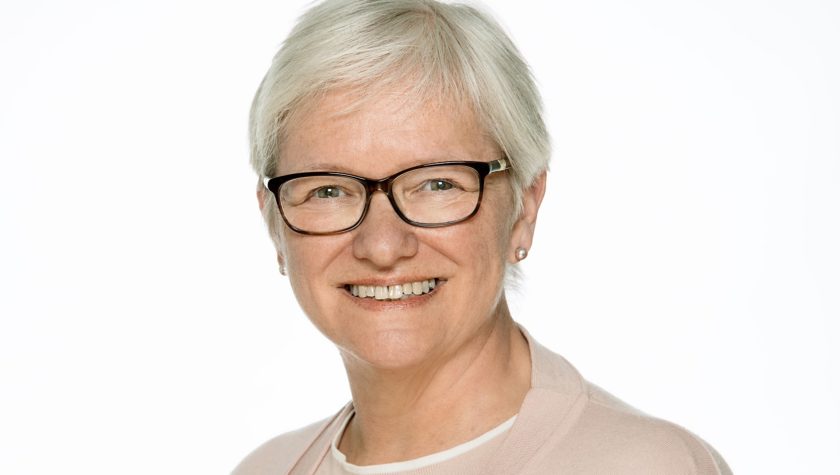“I’m very pleased to be here, and indeed, to have had the opportunity to have listened to some, if not all, of the presentations today.
This is my chance to assess progress against the Commission’s report, which we published nearly three years ago in November 2017, on what we call the Cambridge-Milton Keynes-Oxford Arc.
That made an acronym that we could use, ‘CaMkOx.’
We’re very keen to get Milton Keynes in there to counter the challenge back then that this was just about a couple of elitist universities and demand from some professors to go from one to the other.
But we’ve moved on in terms of that branding discussion.
And we know that this remarkable set of places is home to celebrated academic institutions and businesses, pioneering science and engineering installations, impressive world heritage and other visitor attractions – and, of course, all of you already know that.
Three years on from the study’s publication, the world around us is a different one – although some things haven’t changed.
For example, this is the third year in a row that Westminster Forum has provided a platform for us to come together and review the progress in developing the arc – or, as you might expect me to say, implementing our recommendations.
But, of course, this is the first time that we’re doing it from a distance.
I’m the last speaker today but I won’t be the first to note that Covid-19 has sent shockwaves through our everyday lives and shaken the whole economy – and continues to shake the economy.
As the government grapples with the recovery, long-term infrastructure planning, in our view at the Commission, alongside short-term stimulus measures, will be vital to grow confidence and get Britain back on track.
The next phases of supporting economic recovery should focus on the market confidence which is necessary for large scale investment, as well as the lending and employment that will go alongside it.
A national infrastructure strategy prioritising regional growth and decarbonising the economy needs to be a critical part of the recovery plan.
The Commission looks forward to seeing that long awaited strategy and we expect to see that before the end of the year.
Alongside that strategy, securing long term economic success will require us to place strategic bets on some big projects – and analysis carried out by the Commission suggests the CaMkOx Arc should be one of those places. That need is one of the things that hasn’t changed.
You don’t have to look hard to see why this area should be an investment priority, given the potential for building on its economic success and its importance for the country.
Cambridge, Milton Keynes and Oxford are among the UK’s most productive, successful and fast-growing cities.
The Commission has argued that the CaMkOx Arc should be made a national priority alongside London, the Northern Powerhouse and the Midlands Engine.
With world-leading universities, knowledge-intensive technology hubs, and a highly-skilled workforce, the Growth Corridor already makes a substantial contribution to the national economy. But to deliver that continuing contribution, it will need to continue to attract residents of all kinds and they will need to be able to afford to live there.
Our primary recommendation – the primary conclusion of our analysis – was that the pinch point was the limitations on housing. That’s not the only thing that needs to be provided, but that was the central pinch point that we identified. That in turn means enabling the provision of infrastructure to support the acceleration in homebuilding needed for the arc to reach its potential.
At present, a lack of sufficient and suitable homes presents a fundamental challenge that could constrain the growth prospects of all these businesses – both current and new – if the right action isn’t taken.
The under-supply of homes is restricting firms’ access to labour and acting as a barrier to their competitiveness.
And, indeed, while we were carrying out our study, the Commission heard from global firms located in the corridor who told us that, had they realised the impact that employees’ housing costs would have on their business, they might have not considered the location.
That’s a really strong statement – and, of course, that’s as much about east-west connectivity as north-south.
At present, the distinct towns and cities within the arc operate as a series of separate labour markets. We need them to act as a connected economic centre.
In our report, which we call Partnering for Prosperity, we identified opportunities to create well-designed, well-connected communities and deliver one million new homes and jobs in this arc by 2050, while respecting the natural environment, respecting flood plains and without making changes to existing Green Belt protections.
Of course, an alternative would be to relax the Green Belt and allow each individual city to establish its own expansion – and that might work for those individual cities, but it would not create the kind of integrated labour market that the arc needs. Nor, would it help create vibrant places at a human scale and incidentally the UK’s first new towns for half a century.
We know that those can work, and if we get this right, the prize up for grabs is really considerable.
Modelling carried out by Cambridge Econometrics to inform our report, undertaken in 2016 and 2017, found that without major interventions, and with rates of housing completions at current levels, the area would only support around 335,000 new jobs up to 2050, increasing economic output by around £85 billion per annum.
However, by meeting future needs and removing constraints, a transformational level of growth could be sustained, supporting around 1.1 million new jobs and increasing economic output by over double the previous estimate – £163 billion.
Based on the Commission’s estimates of population and workforce, we thought then that 30,000 new homes a year would be needed across the arc. 7,000 of those mitigating the constraints from under-delivery of homes in land-constrained markets such as London.
That sounds a lot – and, indeed, it is quite a lot – but it’s spread over quite a large area.
So far, I think the government has shown that it shares the Commission’s ambition for the Growth Corridor.
In its response to our study in October 2018, the government committed to working in collaboration with all of you, its local partners, to make the arc the world-leading place for high-value growth, innovation, sustainability and productivity.
And, of course, we welcome all the promising developments we have seen since then:
- The Non-Statutory Spatial Framework for growth. I think that’s an absolutely crucial building block
- The Development Corporations which the government support. That’s also important.
And, of course, there are the proposals coming through in the Planning White Paper for very large sites, to move development under a Development Consent Order, and to make those part of the NSIP regime. That could be game-changing for some of the possibilities and we’re still looking at how that might work in practice: as some of you will know, I was involved in the Task Force behind the Planning White Paper.
On the transport side, which is more directly in the Commission’s remit:
- We have been encouraged by progress on phase two of East-West Rail, connecting Bicester to Bedford – and indeed we have seen some cranes at Bletchley
- The first round of public consultation has been completed on the Cambridge South station
- The options for phase three of East-West Rail have been completed, so there are some preferred options available. I look forward to how those are developed into a Transport and Works Act proposal, or indeed the other proposals to take forward that set.
So, there is quite a lot to celebrate, but we can’t ignore those major challenges that persist. We still don’t really bring together effectively the planning for development and the supporting infrastructure, which was a key plank in our recommendations.
Perhaps that’s not surprising when the government is operating in an unenviable environment, with the pandemic vying for the lion’s share of ministerial time and energy.
So, the ability of everybody in this audience to make sure that their voices are heard and to shout loudly, is really important.
I’d continue to argue that to buoy the economy for the struggle ahead, some projects on this scale will be bets worth placing. Not only would further progress give a sign of confidence for the economy in general, but also for the large contractors and their supply chains – and more broadly it sends a message that we are building for continued success across the corridor.
With that in mind, the advancement of EWR’s second phase is a great achievement, but without phase 3 – the new line between Bedford and Cambridge – we still don’t complete that. I think that that final link, where we put that line and how that plays into the potential developments along the outline route, as well as the work that the team has done at East-West Rail, is really important.
At the western end of the corridor, the Expressway is a lot more challenging – connecting the M1 and the M40. We’re not sure exactly where that is going to go but our recommendation continues to be for some form of new road link at this crucial connection, as well as between the M40 and the A34.
So, substantial investment in transport improvements across the corridor is still very much necessary. It has got support but there will be continued challenges. The NIC will continue to report on our recommendations and whether they’re being acted on in our Annual Monitoring Report. We’ll continue to make the case that we need those connections across the full arc to get the labour market flexibility and optionality, enabling people to work in different places at different times over their careers.
A combination of ministerial and local leadership, as well as the comprehensive engagement between local communities, is critical.
Local communities need to feel they are being listened to, and that plans are being shaped by their input and with their families and their businesses in mind. We need to deliver on good design principles which can provide places and infrastructure which are accessible, attractive and engaging. All of that is crucial.
People need to feel – and be – part of the process. The Development Corporation model can assist with that. But equally, it can feel a bit too top-down. So, we need to work on that.
But of course, there are some things that only government can do and, as with any large and complex development, there will be some elements where a top-down approach is necessary. It won’t, for instance, be feasible for development corporations to overcome the area’s transport problems alone, nor indeed to provide the forward funding that will be necessary.
Creating as much certainty as possible in future plans will give confidence to the private sector to invest. To build that confidence, we need to achieve buy-in and build a true partnership, uniting as wide a group of stakeholders as is possible behind a common goal.
I know the reason why many of you are here today is because you share that vision, and I hope you will also share my long-standing view that imposing major development schemes on communities doesn’t work.
To conclude, much progress has been made. Many people have also rightly made the point that East-West Rail was a bottom-up idea which was then picked up by us at the Commission, so I hope that you are pleased that we supported it.
We need to continue to develop those transport options, and the planning for the housing, which will give you the passengers that will make that railway a success. And, we need to make sure that the financial case for that is made strongly to central government. The integration isn’t just between the housing and the transport, it is also between the top-down and the bottom-up.
We need to give people and local institutions the opportunity to support this, so that at the top-level there is the confidence to make the required decisions.
Thank you.




